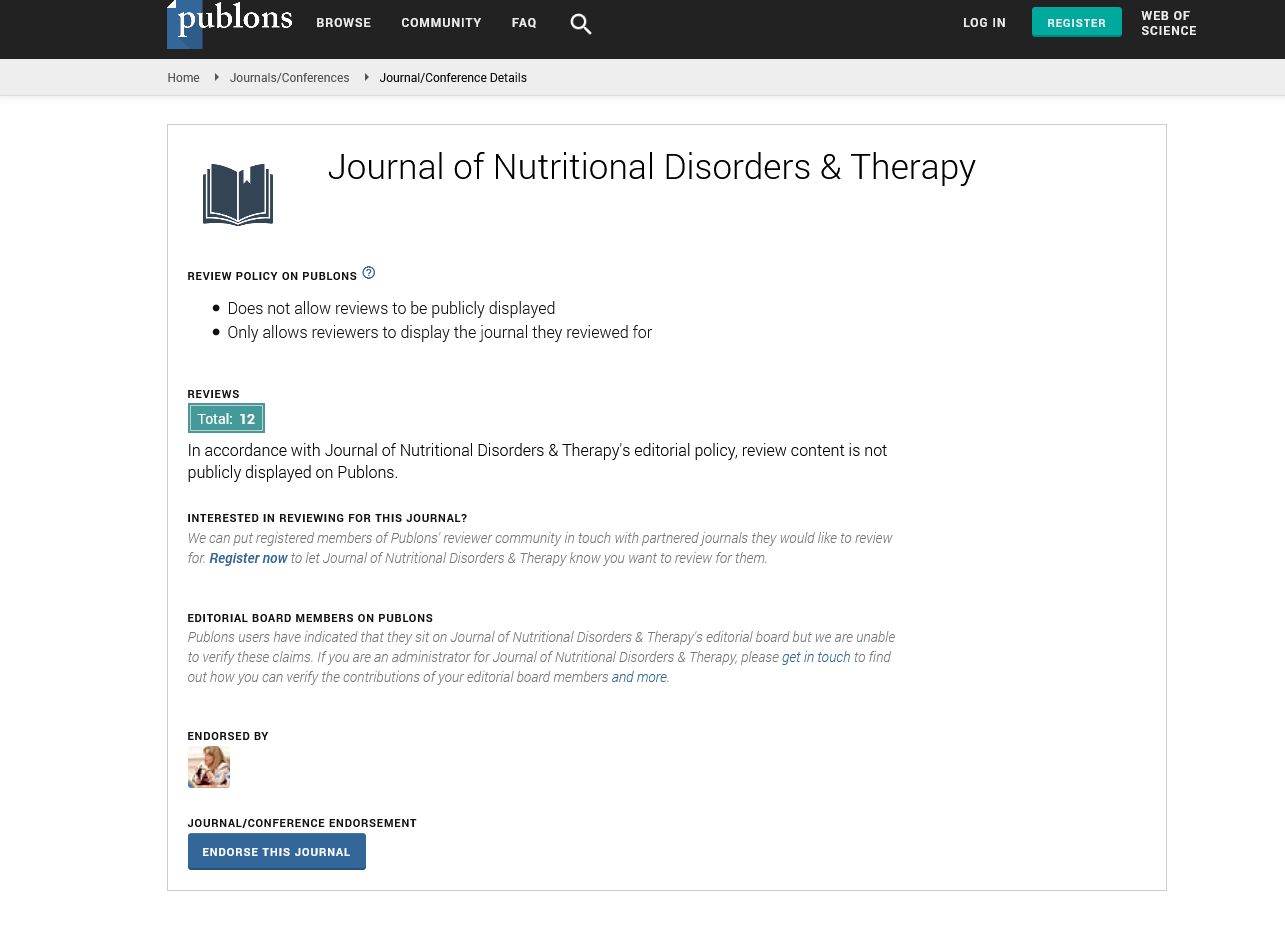Indexed In
- Open J Gate
- Genamics JournalSeek
- Academic Keys
- JournalTOCs
- Ulrich's Periodicals Directory
- RefSeek
- Hamdard University
- EBSCO A-Z
- OCLC- WorldCat
- Publons
- Geneva Foundation for Medical Education and Research
- Euro Pub
Useful Links
Share This Page
Journal Flyer

Open Access Journals
- Agri and Aquaculture
- Biochemistry
- Bioinformatics & Systems Biology
- Business & Management
- Chemistry
- Clinical Sciences
- Engineering
- Food & Nutrition
- General Science
- Genetics & Molecular Biology
- Immunology & Microbiology
- Medical Sciences
- Neuroscience & Psychology
- Nursing & Health Care
- Pharmaceutical Sciences
Commentary - (2025) Volume 15, Issue 1
Neural Signatures of Energy Imbalance in Female Hypothalamic Architecture
Erwan Hudry*Received: 25-Feb-2025, Manuscript No. JNDT-25-29116; Editor assigned: 27-Feb-2025, Pre QC No. JNDT-25-29116 (PQ); Reviewed: 13-Mar-2025, QC No. JNDT-25-29116; Revised: 20-Mar-2025, Manuscript No. JNDT-25-29116 (R); Published: 27-Mar-2025, DOI: 10.35248/2161-0509.25.15.320
Description
Hypothalamic nuclei like the Arcuate Nucleus (ARC), Paraventricular Nucleus (PVN), Lateral Hypothalamic Area (LHA), Dorsomedial Nucleus (DMH), and Ventromedial Nucleus (VMH) each contribute to appetite regulation and weight maintenance. Structural neuroimaging studies can identify differences in size or signal intensity of these nuclei among young females with obesity or anorexia nervosa, offering insight into disease mechanisms and potential reversibility.
Findings in obesity
Arcuate Nucleus (ARC): The ARC contains essential neurons that sense metabolic hormones such as leptin and insulin. In females with obesity, several studies have documented increased volume of the ARC, possibly representing gliosis or vascular expansion due to chronic overnutrition.
Paraventricular Nucleus (PVN): The PVN regulates energy balance through corticotrophin-releasing hormone and oxytocin release. Evidence points to enlarged PVN volume in obese adolescents, which may reflect a sustained drive to modulate homeostatic and stress-related pathways.
Lateral Hypothalamic Area (LHA): Known for its appetite-stimulating role, the LHA sometimes appears reduced in signal intensity, potentially indicating lower neuronal density. In volumetric studies, this nucleus shows no robust change or slight enlargement.
Ventromedial Nucleus (VMH): As a satiety center, the VMH has shown minimal structural change in obesity cohorts. Some researchers interpret this as functional adaptation rather than morphological alteration.
Dorsomedial Nucleus (DMH): Less consistently studied and showing mixed outcomes, the DMH may display minimal volumetric increase in obesity, potentially associated with increased stress-axis activity.
Findings in anorexia nervosa
Arcuate Nucleus (ARC): In contrast to obesity, young females with anorexia nervosa exhibit reduced ARC volume. This may stem from neuronal loss, synaptic pruning, or diminished hormone signaling due to sustained energy restriction.
Paraventricular Nucleus (PVN): Structural MRI in undernourished adolescents shows decreased PVN volume, correlating with impaired stress response and neuroendocrine alterations, such as low cortisol peak and reduced thyroid function.
Lateral Hypothalamic Area (LHA): Evidence points to smaller LHA volume, which may reflect reduced orexigenic drive, contributing to fundamentally altered hunger signaling and sustained suppression of appetite.
Ventromedial and Dorsomedial Nuclei (VMH and DMH): These regions also show slight volume reduction, aligning with altered metabolic regulation and diminished stress-axis activation.
Reversibility and treatment effects
Recent longitudinal studies explored whether structural anomalies revert following weight normalization or interventions. One study conducted repeated imaging after 12 months of BMI normalization in anorexia patients, documenting partial ARC volume recovery, although PVN and LHA remained smaller than controls.
In obesity cases undergoing bariatric surgery or medical weight reduction, ARC and PVN volumes demonstrated gradual cortical thinning, though they did not return fully to control levels within 2 years. These findings suggest that hypothalamic nuclei exhibit plasticity in response to energy state but may also retain some structural “memory” of pathological weight extremes.
Young females with obesity or anorexia nervosa show consistent structural alterations in key hypothalamic nuclei. These differences, such as ARC enlargement in obesity and contraction in anorexia, reflect the brain’s plastic response to energy imbalance. Partial reversibility after recovery suggests that imaging can serve as a valuable biomarker. Further research should focus on validation and practical clinical integration.
Citation: Hudry E (2025). Neural Signatures of Energy Imbalance in Female Hypothalamic Architecture. J Nutr Disord Ther. 15:320.
Copyright: © 2025 Hudry E. This is an open-access article distributed under the terms of the Creative Commons Attribution License, which permits unrestricted use, distribution, and reproduction in any medium, provided the original author and source are credited.

